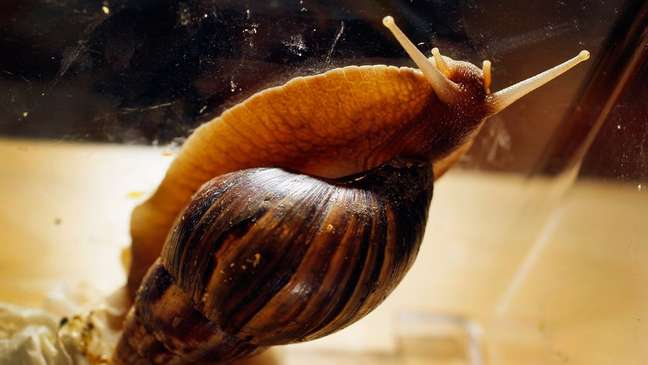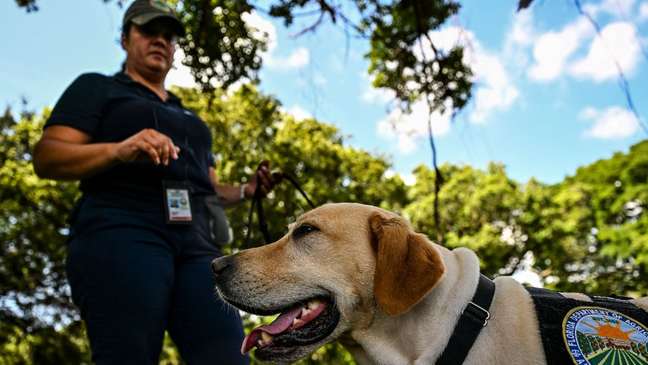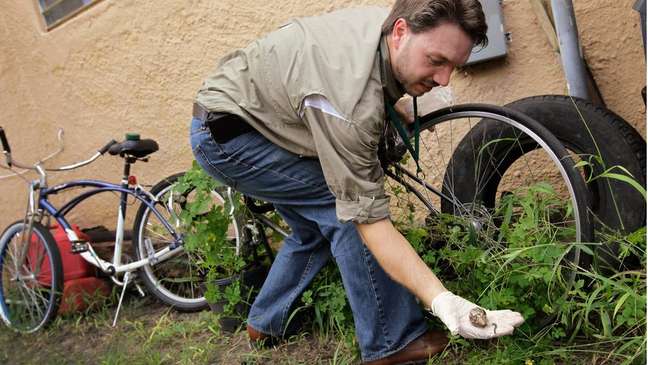Giant African snails found in Florida can destroy native plants and also harbor worms that affect humans.

Giant African snails may seem slow and harmless animals, or even appetizing to some. But in reality they are “one of the most harmful snails in the world and a potential risk to human health,” according to US officials who are looking for these invasive species.
“They are dangerous for our health because they carry parasites (Angiostrongylus cantonensis) that cause meningitis in humans, ”Florida Agriculture Commissioner Nikki Fried said in an interview with reporters earlier this month.
“They also consume at least 500 different plants, which makes them a clear threat to our agricultural and natural spaces.”
Specially trained sniffer dogs and at least 30 employees are scouring gardens in Florida to eradicate these invasive species.
Since the threat was detected in June, authorities have captured more than 1,400 live and dead snails in Pasco County, according to local media.
Giant African snails reach sizes up to 20 centimeters and reproduce quickly.
“A giant African snail can lay up to 2,000 eggs per year,” Jason Stanley, a biologist at the Florida Department of Agriculture, told AFP news agency.
threat to humans
But are humans also at risk? Yes, experts say.
These snails often harbor rat lung worms which, when ingested by humans, can reach the brain, causing meningitis (infection of the membranes covering the brain).

“Normally, they don’t affect people. But if they accidentally enter humans, these parasites can get lost and end up in places where they can cause a lot of damage, such as inside the eyeballs or even the brain,” says William Kern, professor in the department. of Entomology and Nematology at the University of Florida (USA).
A quarantine zone has been established in the city of New Port Richey: no plants can be removed from the area to try to stop the further spread of the snails. To prevent infection, sniffer dogs have also been trained not to take snails in their mouths.

It already happened?
Yup.
The first invasion took place in the 1960s. It took seven years and a million dollars to put an end to the problem. The second took place in 2010. Ten years later, the snails were eradicated, at a staggering cost of $ 23 million.
The authorities can declare the area free from snails only after two years without new detections.
In Europe, some people keep these snails as pets, but in the United States it is illegal to keep them without a license. Authorities and experts suspect that the current invasion occurred due to people trading snails as pets.
“It is very likely that they were brought by someone as a pet. The ones we found in Pasco County have white skin instead of the normal gray color,” Kern told the BBC.

Snails have their origin in the African countries of Kenya and Tanzania, but are now found in many places around the world, including South and Southeast Asia.
The US Department of Agriculture says, “This mollusk is now established on many Caribbean islands, much of South America and, more recently, has been introduced to Costa Rica.”
Inedible
Florida authorities are now asking people to report any presence of these snails.
“If you see one of these snails, don’t touch it. Call us. They carry diseases like meningitis,” says Commissioner Nikki Fried.
It also has a caveat for those who prefer to enjoy them.
“The most important thing is not to eat them. This is not a snail to be fried in butter, oil and garlic.”
– This text was published in https://www.bbc.com/portuguese/geral-62330986
Source: Terra
Benjamin Smith is a fashion journalist and author at Gossipify, known for his coverage of the latest fashion trends and industry insights. He writes about clothing, shoes, accessories, and runway shows, providing in-depth analysis and unique perspectives. He’s respected for his ability to spot emerging designers and trends, and for providing practical fashion advice to readers.








